Przez Chris Grinter, on July 25th, 2011 This Monday I am departing from the usual Arctiinae for something completely different – a microlep! This is a Nepticulidae, Stigmella diffasciae, and it measures in at a whopping 6 mm. I can’t take credit for spreading this moth – all of the nepticulids I have photographed are from the California Academy of Sciences and spread by Dave Wagner while he was here for a postdoctorate position.
The caterpillars mine the upper-side of the leaves of Ceanothus and are known only from the foothills of the Sierra Nevada in California. If you’re so inclined the revision of the North American species of the genus is freely available here (.pdf).
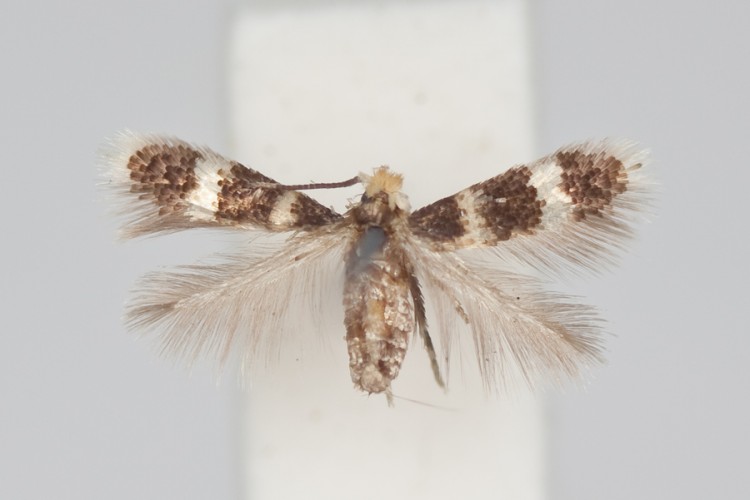 Stigmella diffasciae (Nepticulidae)
Przez Chris Grinter, w dniu 22 lipca, 2011 It’s been a little while since the last GOP challenge, ale this is a softball. I’m hoping they were just too lazy to find a more suitable image…

Przez Chris Grinter, w dniu 19 lipca, 2011 Co zrobiłby Jezus, gdyby miał trochę wolnego czasu – może wyleczyć chorobę, zakończyć wojnę, lub nakarmić głodujących – ale nah, każdy widzi, że nadchodzi. Dlaczego nie szokować ich do rdzenia – spalić twarz na paragonie Walmart! Przynajmniej, to co para w Południowej Karolinie uwierzyć, że znalazł, a Odbiór Walmart z twarzy Jezusa na nim. To nie jest dokładnie to, nowe lub ekscytujące, ludzie mają wspaniałą zdolność do rozpoznawania twarzy w czegokolwiek. Jezus i inne znaki “pojawić się” na przypadkowych rzeczy cały czas, a nawet w 2005 Kapliczka została zbudowana w około Maryi Panny plama wody w podziemnym Chicago.
Pareidolia ktoś? Faktycznie, że twarz wygląda bardzo przekonująco, Nie jestem pewien, że to nie był po prostu sfałszowane lub “wzmocnione”. W zbliżeniu nawet wyglądać widoczne są odciski palców wszystkich nad nim. Ponieważ nie mam Walmart wszędzie blisko mnie lub otrzymania Walmart na rękę nie mogę określić, jak papier jest czuły i jak łatwo byłoby zrobić – ale jak długo myślisz, zanim pojawia się w serwisie eBay? W każdym przypadku, wygląda bardziej jak James Randi dla mnie od Jezusa (przynajmniej faktycznie wiedzieć co wygląda jak Randi!).
 z CNN
Przez Chris Grinter, 18 lipca, 2011 Over on Arthropoda, fellow SFS blogger Michael Bok shared an image of his field buddy, Plugg the green tree frog. My first thought was of a similar tree frog that haunted welcomed me everywhere I went in Santa Rosa National Park, Kostaryka. Needless to say, Costa Rica instills a sudden habit of double checking everything you are about to do. This species is known as the milk frog (Phrynohyas venulosa) for their copious amounts of milky white toxic secretions. One of the first stories Dan Janzen told me while while I was with him at Santa Rosa was about this species – and accidentally rubbing his eye after holding it. Thankfully the blindness and burning was only temporary.
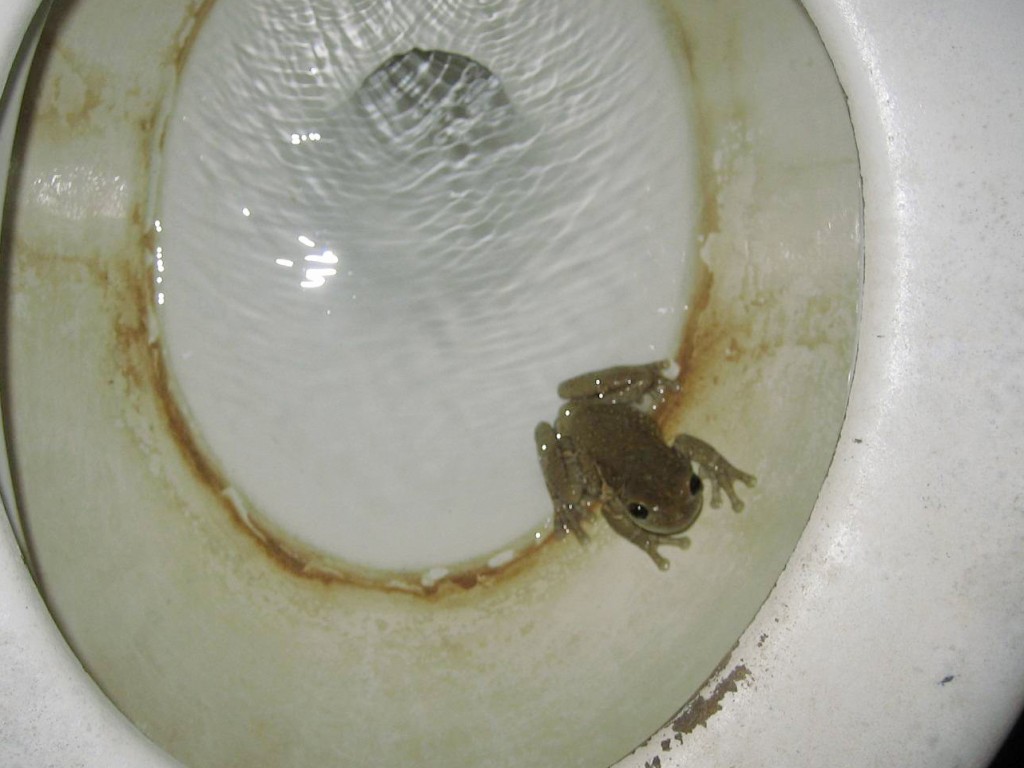 Milk Frog: Phrynohyas venulosa
Przez Chris Grinter, 18 lipca, 2011 I’ll keep the ball rolling with Arctiinae and post a photo today of Ctenucha brunnea. To może być wspólne ćma w wysokich traw wzdłuż plaż z San Francisco do Los Angeles – choć w ostatnich dziesięcioleciach liczba tego ćmy maleje o niszczenie siedlisk i inwazji na plaży trawie (Piaskownica zwyczajna). But anywhere there are stands of giant ryegrass (Leymus condensatus) you should find dozens of these moths flying in the heat of the day or nectaring on toyon.
 Ctenucha brunnea (Erebidae: Arctiinae)
Przez Chris Grinter, 12 lipca, 2011 Cóż, jak można się domyślić przedmiotem nie jest tak szokujące, jak sugeruje mój tytuł, ale nie mogłem się powstrzymać, aby kręcić z artykułu Stróża. I naprawdę uważają, że jest zabawne, kiedy spotykam wszystko, co mówi, naukowcy “zdumiony”, “skonsternowany”, “wstrząśnięty”, “zaskoczony”, – Myślę, że to temat na inny czas… Niemniej jednak naprawdę cool butterfly has emerged at the “Sensational Butterflies” exhibit at the British Museum in London – a bilateral gynandromorph! The Guardian reports today that this specimen of Papilio memnon just emerged and is beginning to draw small crowds of visitors. I know I’d love to see one of these alive again – although the zoo situation would take away quite a bit of the excitement. I think the only thing more exciting than seeing one of these live in the field would be to net one myself!
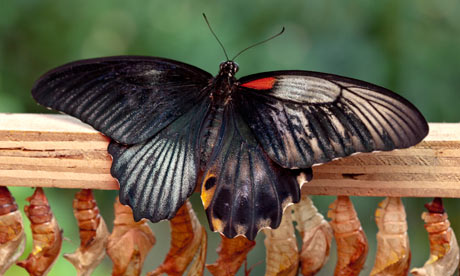
One little thing tripped my skeptical sensors and that is the quote at the end of the article taken from the curator of butterflies, Blanca Huertas. “The gynandromorph butterfly is a fascinating scientific phenomenon, and is the product of complex evolutionary processes. It is fantastic to have discovered one hatching on museum grounds, particularly as they are so rare.”
Dobrze, I don’t specifically see how these are a “product of … evolutionary processes” inasmuch as wszystko life in wszystko forms is a product of evolution. These are sterile “glitches” that are cool, but not anything that has been specifically evolved for or against. Perhaps it would be more adept to call this a fascinating process of genetics (which the article actually describes with accuracy). Również – butterflies emerge as adults and hatch as caterpillars – but that’s just me being picky.
Przez Chris Grinter, on July 11th, 2011 Today’s moth is a beautiful and rare species from SE Arizona and Mexico: Lerina incarnata (Erebidae: Arctiinae). Like many other day flying species it is brilliantly colored and quite likely aposematic. After all, the host plant is a milkweed and the caterpillar is just as stunning (poniżej).
 Lerina incarnata (Erebidae: Arctiinae)
This image of an old, spread specimen hardly does the animal justice, but one lucky photographer found a female ovipositing at the very top of a hill outside of Tucson, Arizona. While you’re at it go check out some of Philip’s other great photographs on SmugMug.
 Lerina incarnata - Philip Kline, BugGuide As I mentioned above this moth also has an equally impressive caterpillar that feeds on Ascleapias linaria (pineneedle milkweed).
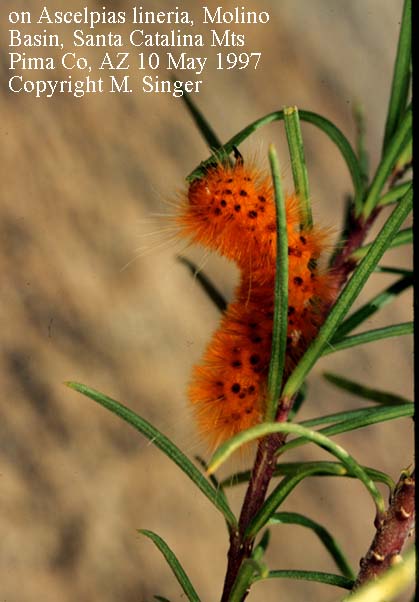
Przez Chris Grinter, on July 5th, 2011 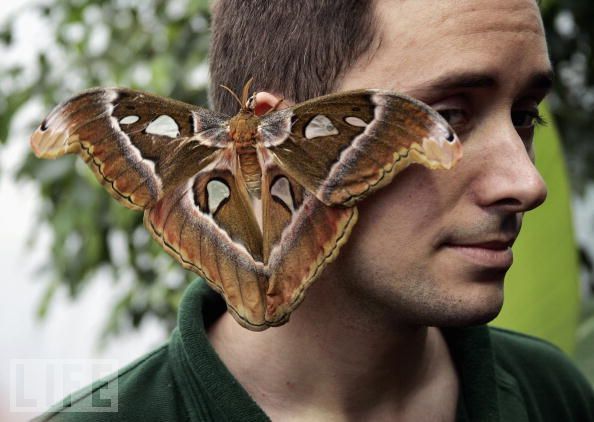
It seems like there is a preponderance of urban legends that involve insects crawling into our faces while we sleep. The most famous myth is something along the lines of “you eat 8 spiders a year while sleeping“. Actually when you google that the number ranges from 4 to 8… up to a pound? Not surprising things get so exaggerated online, especially when it concerns the ever so popular arachnophobia. I doubt the average American eats more than a few spiders over their entire lifetime; your home simply shouldn’t be crawling with so many spiders that they end up in your mouth every night! A similar myth is still a myth but with a grain of truth – that earwigs burrow into your brain at night to lay eggs. It isn’t true that earwigs are human parasites (thankfully), but they do have a predisposition to crawl into tight, damp places. It is possible that this was a frequent enough occurrence in Ye Olde England that the earwig earned this notorious name. Cockroaches have also been documented as ear-spelunkers – but any crawly insect that might be walking on us at night could conceivably end up in one of our orifices.
I have however never heard of a moth crawling into an ear until I came across this story today! I guess a confused Noctuid somehow ended up in this boy’s ear, although I can’t help but to wonder if he put it there himself… Moths aren’t usually landing on people while they are asleep nor are they that prone to find damp, tight spots. But then again anything is possible, some noctuids do crawl under bark or leaves in the daytime for safe hiding. I even came across another story of an ear-moth form the UK (not that the Daily Mail is a reputable source).
Naturalnie, some lazy news sources are using file photos of “ćmy” instead of copying the photo from the original story. It’s extra hilarious because one of the pictures used is of a new species of moth described last year by Bruce Walsh in Arizona. Lithophane leeae has been featured on my blog twice before, but never like this!
On a closing note here is a poem by Robert Cording (also where the above image was found).
Consider this: a moth flies into a man’s ear
One ordinary evening of unnoticed pleasures.
When the moth beats its wings, all the winds
Of earth gather in his ear, roar like nothing
He has ever heard. He shakes and shakes
His head, has his wife dig deep into his ear
With a Q-tip, but the roar will not cease.
It seems as if all the doors and windows
Of his house have blown away at once—
The strange play of circumstances over which
He never had control, but which he could ignore
Until the evening disappeared as if he had
Never lived it. His body no longer
Seems his own; he screams in pain to drown
Out the wind inside his ear, and curses God,
Who, hours ago, was a benign generalization
In a world going along well enough.
On the way to the hospital, his wife stops
The car, tells her husband to get out,
To sit in the grass. There are no car lights,
No streetlights, no moon. She takes
A flashlight from the glove compartment
And holds it beside his ear and, unbelievably,
The moth flies towards the light. His eyes
Are wet. He feels as if he’s suddenly a pilgrim
On the shore of an unexpected world.
When he lies back in the grass, he is a boy
Ponownie. His wife is shining the flashlight
Into the sky and there is only the silence
He has never heard, and the small road
Of light going somewhere he has never been.
– Robert Cording, Common Life: Poems (Fort Lee: CavanKerry Press, 2006), 29–30.
Przez Chris Grinter, on June 30th, 2011 
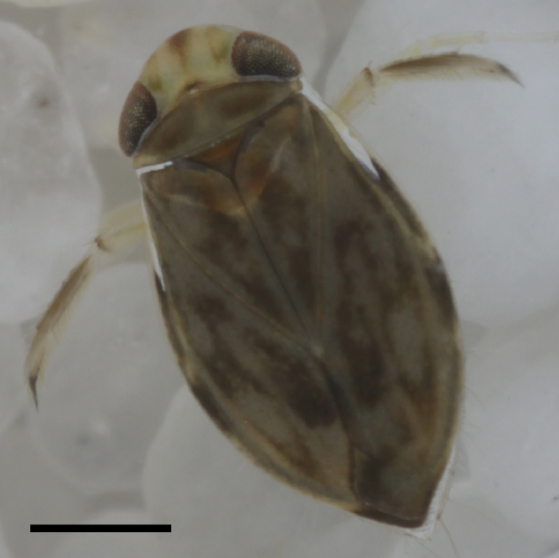 Micronecta scholtzi The hills of the European countryside are alive in the chorus of amorous, screaming, male aquatic bugs. The little insect above, Micronecta scholtzi (Corixidae), measures in at a whopping 2.3mm and yet produces a clicking/buzzing sound easily audible to the human ear above the water surface. To put that in perspective: trying to hear someone talk underwater while standing poolside is nearly impossible, yet this minute insect generates a click loud enough to be mistaken for a terrestrial arthropod. While that doesn’t sound too impressive when we are surrounded by other loud insects like the cicada, M. scholtzi turns out to be a stunningly loud animal when you take into consideration the body size and medium the sound is propagating through to reach our ear. Put into numbers the intensity of the clicks underwater can reach up to 100 dB (Sound Pressure Level, SPL). Shrink us into the insect world and this sound production is equal to a jackhammer at the same distance! So what on earth has allowed this little bug to make this noise and get away with it in a world full of predators?
The authors naturally point out how surprising these results are. The first thing that becomes apparent is that the water boatmen must have no auditory predators since they are basically swimming around making the most noise physically possible for any small animal anywhere. Really this isn’t too surprising since most underwater predators are strictly visual hunters (dragonfly larvae, water bugs and beetles etc…). It is very likely that sexual selection has guided the development of these stridulatory calls into such astounding levels. The second most surprising thing is clear once you graph just how loud these insects are relative to their body size. At the top of the graph is the bottlenose dolphin (T. truncatus) with its famous sonar. But the greatest outlier is actually our little insect in the bottom left with the very highest ratio between sound and body size (31.5 with a mean of 6.9). No other known animal comes close. It is likely though that further examination of other aquatic insects may yield similar if not more surprising results!

To be more accurate about the “screaming”, the bugs (bugs in this instance is correct; the Corixidae belong to the order Hemiptera – the true bugs) are likely to be stridulating – rubbing together two parts to generate sound instead of exhaling air, drumming, itp… In the article the authors speculate that the “sound is produced by rubbing a pars stridens on the right paramere (genitalia appendage) against a ridge on the left lobe of the eighth abdominal segment [15]”. Without pulling up their citation, it appears that stridulation by males in the genus is well documented for mate attraction. And as you would expect, news outlets and science journalists read “genitalia appendage” and translate that to penis: and you end up with stories like this. The function of the parameres can be loosely translated to similar to mandibles in that they are opposing structures (usually armed with hairs) for grasping. The exact use of them may differ by species or even orders, but they are very distinct form the penis (=aedeagus) since they simply help facilitate mating and don’t deliver any sperm. So in reality you have genital “claspers” with a “pars stridens”. And the best illustration of a pars stridens is over on the old blog Archetype. This structure is highlighted below in yellow (and happens to exist on the abdomen of the ant). But in short – it’s a regular grooved surface akin to a washboard. In the end the sentence quoted above should be translated to “two structures at the tip of the abdomen that rub together like two fingers snapping”.
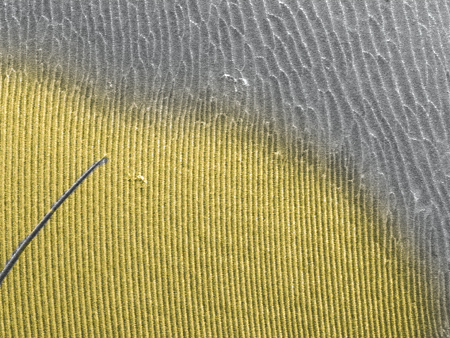 Detail of the pars stridens (in yellow) on the forth abdominal tergite in a Pachycondyla villosa worker (Scanning Electron Micrograph, Roberto Keller/AMNH) Continue reading The incredibly loud world of bug sex
Przez Chris Grinter, 20 czerwca, 2011 Zamierzam zachować potoczyły z tej serii i spróbować uczynić go bardziej regularne. Będę również skupić się na podkreśleniu nowych gatunków w każdym tygodniu od ogromnych zbiorów tutaj w California Academy of Sciences. To powinno dać mi wystarczająco dużo materiału do… co najmniej kilkaset lat.
 Grammia edwardsii (Erebidae: Arctiinae) This week’s specimen is the tiger moth Grammia edwardsii. Up until a few years ago this family of moths was considered separate from the Noctuidae – but recent molecular and morphological analysis shows that it is in fact a Noctuid. The family Erebidae was pulled out from within the Noctuidae and the Arctiidae were placed therein, turning them into the subfamily Arctiinae. OK boring taxonomy out of the way – all in all, it’s a beautiful moth and almost nothing is known about it. This specimen was collected in San Francisco in 1904 – in fact almost all specimens known of this species were collected in the city around the turn of the century. While this moth looks very similar to the abundant and widespread Grammia ornata, close analysis of the eyes, wing shape and antennae maintain that this is actually a separate species. I believe the last specimen was collected around the 1920’s and it hasn’t been seen since. It is likely and unfortunate that this moth may have become extinct over the course of the last 100 years of development of the SF Bay region. Grammia, and Arctiinae in general, are not known for high levels of host specificity; they tend to be like little cows and feed on almost anything in their path. So it remains puzzling why this moth wouldn’t have habitat today, even in a city so heavily disturbed. Perhaps this moth specialized in the salt marsh areas surrounding the bay – which have all since been wiped out due to landfill for real-estate (1/3 of the entire bay was lost to fill). Or perhaps this moth remains with us even today but is never collected because it is an evasive day flying species. I always keep my eye out in the park in spring for a small orange blur…
|
Sceptycyzm
|














